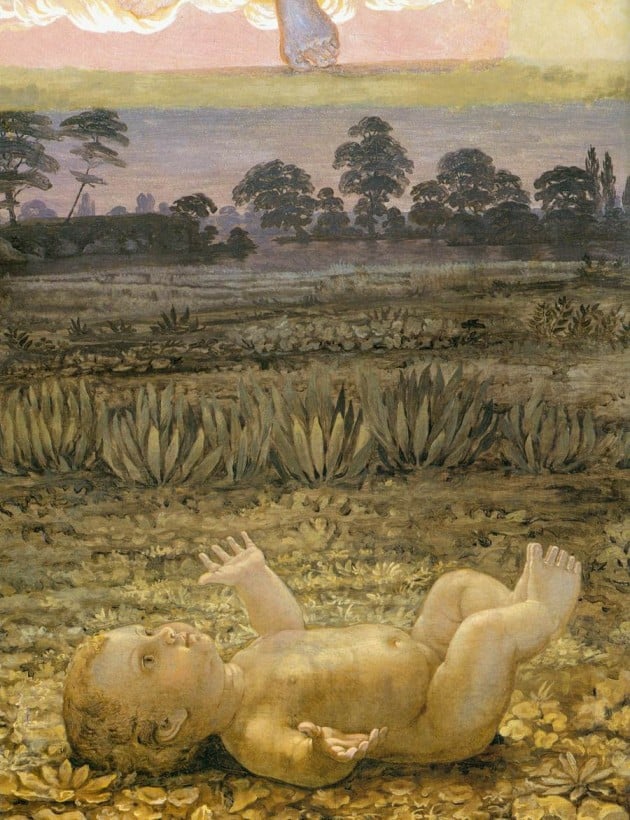Confronted by this strange image we sense at once that we are dealing with a complex and exceptionally sensitive mind. Philipp Otto Runge is one of the most extraordinary artists to have emerged in the Romantic period. His work seems to encompass and sum up the ideas of many of his contemporaries: in his all-too-short life, he tackled several of the themes that preoccupied the most idiosyncratic artists of the age, bringing an almost shocking originality to everything he attempted.
He came from Western Pomerania on the Baltic coast in the extreme north of Germany, not far from the birthplace of Caspar David Friedrich, whom he came to know in Dresden when he studied there in 1801. He returned to the north for the rest of his life, which was overshadowed by chronic illness, apparent in the many likenesses of himself which betray shifting perceptions of a hyper-sensitive personality. With Friedrich, he shared an exquisite appreciation of the innate spirituality of the natural world and of the place of human life in that world. His images of other people reflect an intense subjectivity reminiscent of the mentally unbalanced English painter Richard Dadd — who worked long after Runge’s death, in the 1840 and ’50s.
Runge conceived grandiose ideas linking many aspects of experience involving nature and religion, with theories relating the colour spectrum (a subject that greatly interested his contemporary Goethe) to the fundamental tenets of Christianity. We might be tempted to relate him to the English visionary William Blake, and although the two artists cannot have known of each other, the way Runge lays out his allegorical subject here has something in common with Blake’s (much smaller) watercolour illustrations for his own mystical poetry. They are both also indebted to the prevailing ideas relating to, for instance, the nude figure, or classically-inspired symmetrical design.
But while Blake generalises his figures so that they become in a sense abstractions, symbolic ideas in themselves, Runge’s imagery is grounded in a literal realism underpinned by a very German rigour of draughtsmanship. The larger composition for which this is really a finished study (also in Hamburg) was never completed but consists of separate elements, each studied with academic precision. The putti are naked children beautifully observed from life, and the plants exquisitely rendered as carefully drawn botanical specimens.

Oil on canvas (109 x 85.5 cm.)
Kunsthalle, Hamburg
via WikiCommons
The altarpiece-like design springs from the touching picture of an infant lying on the ground (see detail below) and gazing up at the vision of Aurora, goddess of the dawn as she rises from a broad tranquil landscape into a golden morning sky across which cherubs float round a huge lily-flower. This is also, clearly, an allegory of the ascension of the human soul towards God, while underlining the unity of created things, of land and sea, of plants and people, in ecstatic harmony.
Morning is the only subject to survive of Philipp Otto Runge’s ambitious plan to paint the four times of day — the others are noon, evening and night — which would no doubt have elaborated on his theory that the three primary colours, red, blue and yellow, can be equated with the three persons of the Christian Trinity, Father, Son and Holy Spirit. For all its delicate and homely minutiae, this is a vast cosmic vision.

Andrew Wilton was the first Curator of the Clore Gallery for the Turner Collection at Tate Britain and is the author of many works on the artist.




